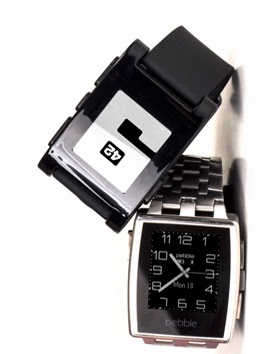Skaters new album, Manhattan, caught a good bounce this week. They are a solid band with considerable talent (and have even been known to shred now and again). And they are also part of a struggling sub-genre of holdouts who produce proficient noise pop but without the usual urgency.
There is some good and bad to this approach. It catches your attention with the space they fill for a few minutes. And after that? It's easy to forgetaboutit. Maybe too easy.
Skaters make Manhattan to establish home.
If Manhattan does anything, what it does best is give the band a chance to plant its flag firmly in New York. That wasn't always the case for these guys. Technically, the band came together in Los Angeles when singer/songwriter Michael Ian Cummings met English guitarist Josh Hubbard.
One year later, they split the distance difference and landed in New York. There they added drummer Noah Rubin and bassist Dan Burke. And then, shortly after signing with Warner Bros., the band laid down some songs about people they met in Manhattan when they all worked as bartenders.
That gives Miss Teen Massachusetts about as much roots as the band. Somebody inspired it.
The video came together with the help of Chilean-American director Danilo Parra, who came up with the video direction after the band expressed a desire to steer clear of a young love story. The inclusion of a psych ward clearly breaks that, creating a story based much more on disconnection and isolation.
Miss Teen Massachusetts is one of a handful of brilliant tracks on album. The video just adds to the allure, making it more than an unrequited love song. It also makes the much more direct track — Deadbolt — all the more of a contrast. Deadbolt is a cop paranoia pop song with a catchy chorus.
The whole of it is probably too subdued and confused, which fits with the hit and miss of this album. The opener One Of Us might have made a better album promoter. While there isn't much to the two-plus minute track, the builds give it a more convincing lift off.
Other standouts on the album include the slow motion Austin favorite I Wanna Dance (But I Don't Know How), half-hearted hardcore experimental Nice Hat, and the closer This Much I Care. Skip the square-peg Band Breaker, boring To Be Young In NYC, and low energy Fear Of The Knife. While some might appreciate the diversity, it sometimes feels like everyone is trying to figure out where Skaters fits.
Nobody needs to figure it out. It's painfully obvious that Miss Teen Massachusetts is the hero on this album, along with four or five support songs (if you include Schemers, which left me on the fence). What else does anybody need to know? Nobody needs to see diversity when there is already the making of a smart and sometimes unsettling alternative pop-rock band.
Manhattan By Skaters Sparks 3.8 On The Liquid Hip Richter Scale.
Keeping in mind that 3.8 here lands somewhere around 6.5 elsewhere, it seems clear that Skaters have a good thing going if they can figure out where exactly they are going. For a band that got its start with a handful of experimental songs and covers from the Pixies, playing a little looser could help fire the band up to stay above neutral.
You can find Manhattan by Skaters on Amazon. You can also order Manhattan from Barnes & Noble or download it from iTunes. Skaters are currently on tour. Catch their schedule on Facebook,
![Liquid [Hip]](https://blogger.googleusercontent.com/img/b/R29vZ2xl/AVvXsEjAFBQPqS7J0-rrttNoRYSsuwIePPZf4Nq6sqDioK1zzVQXJIQXKzq_NVNI4n6h3inuRQFBKOcJeZeSufkdHHIOxbSWyBjTjTxgKEQGyPzdwvkEEeECh4bI5YEGk4RWGUINSd7vulPQsCA/s1600-r/liquidhip.jpg)































